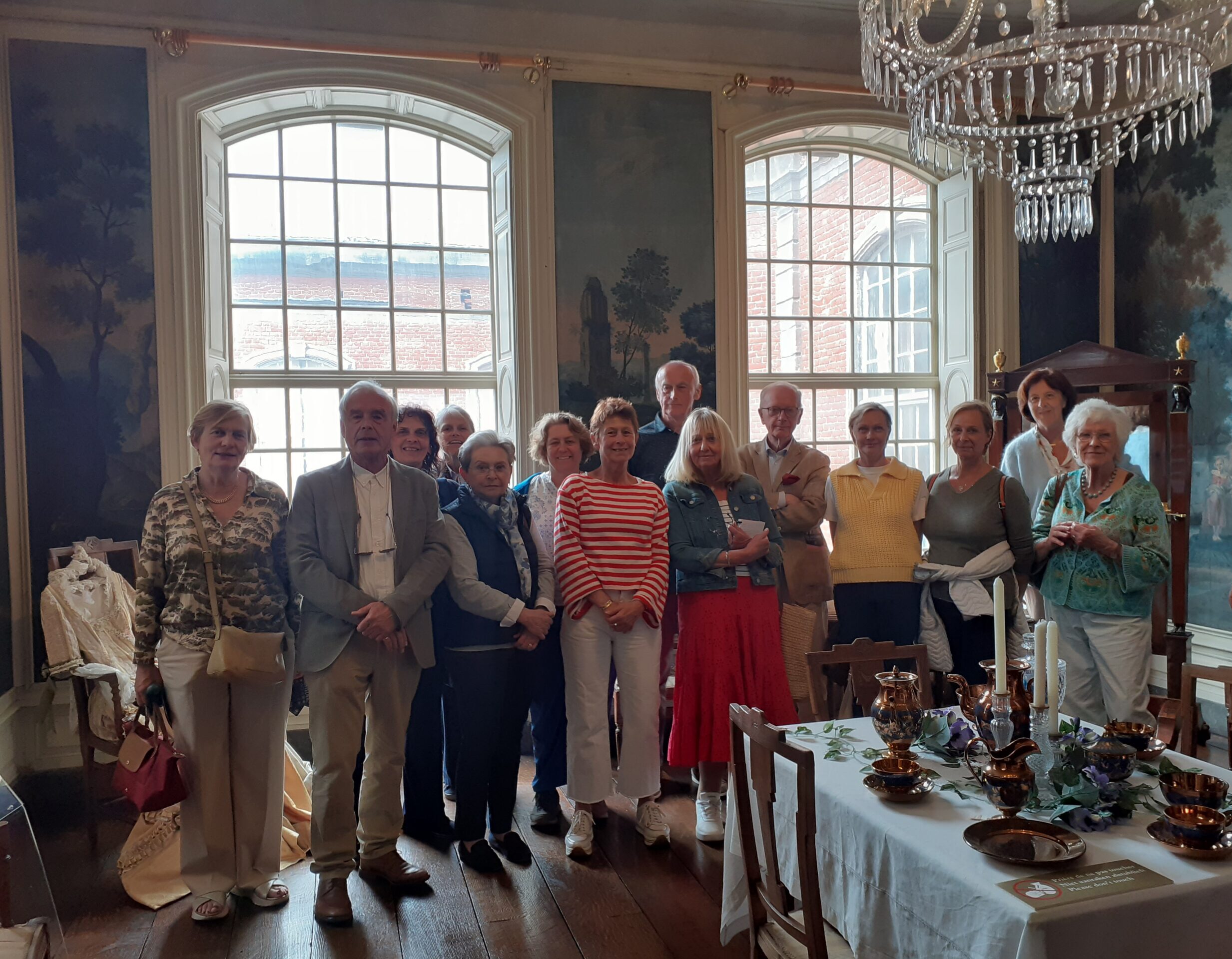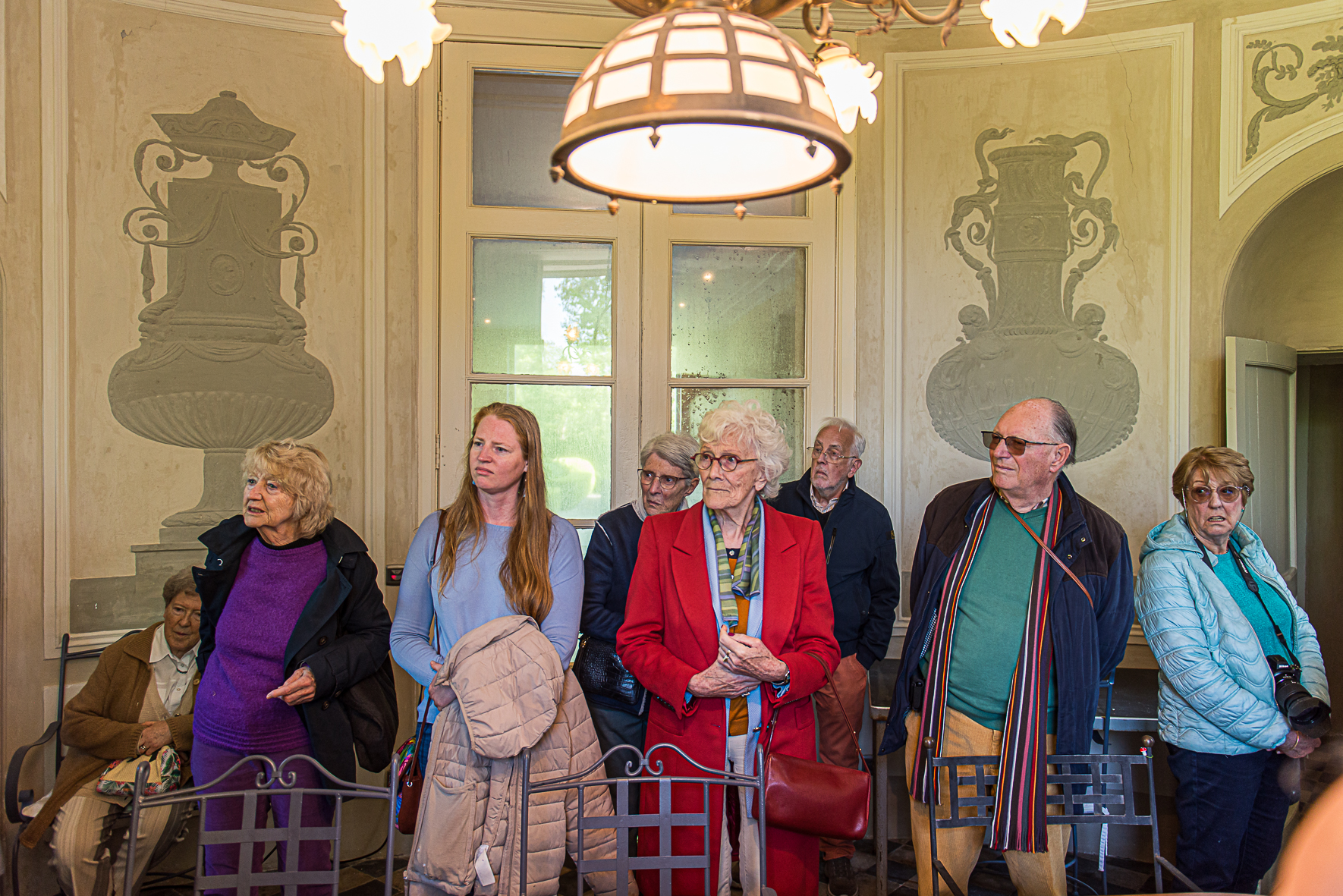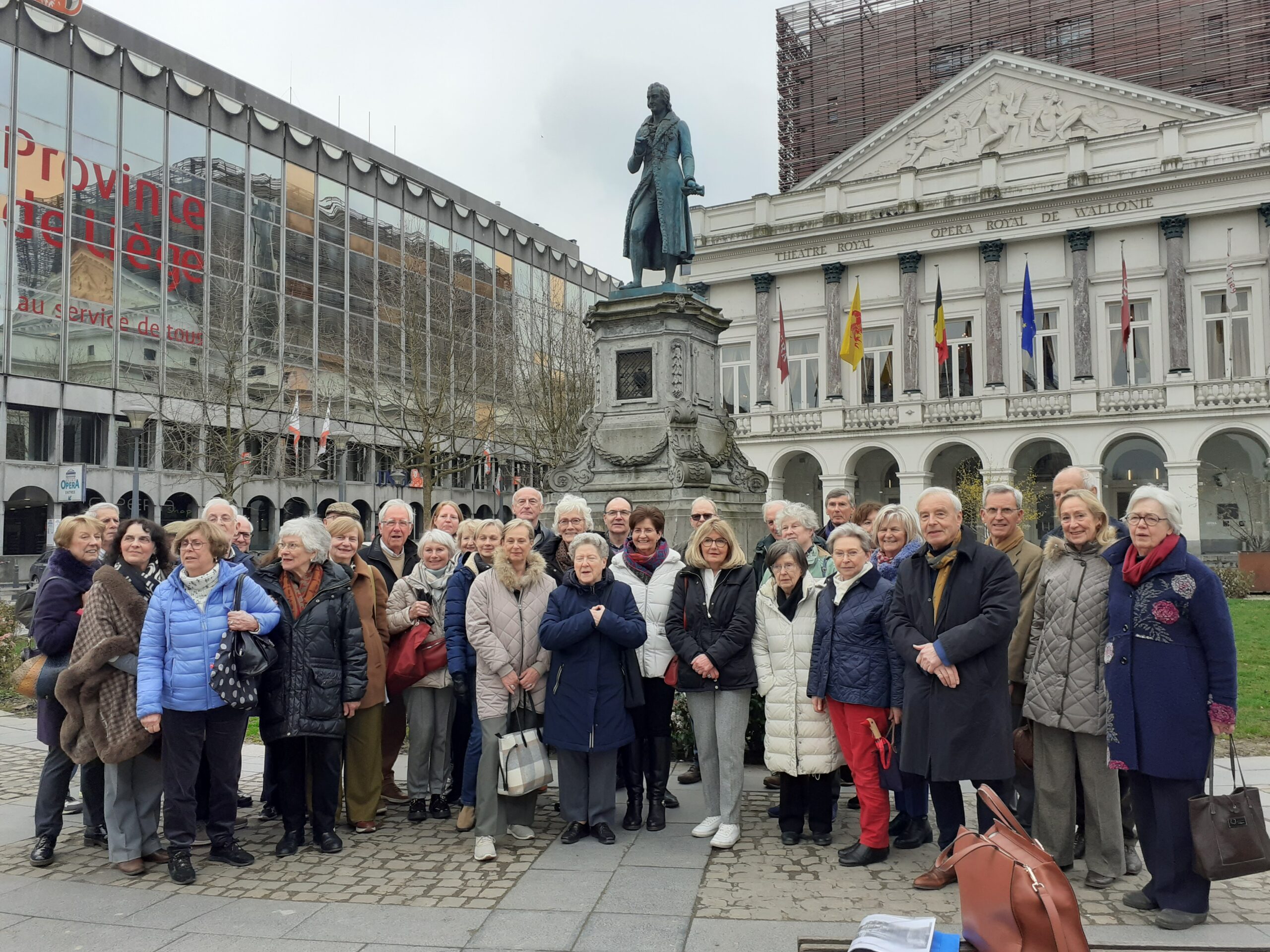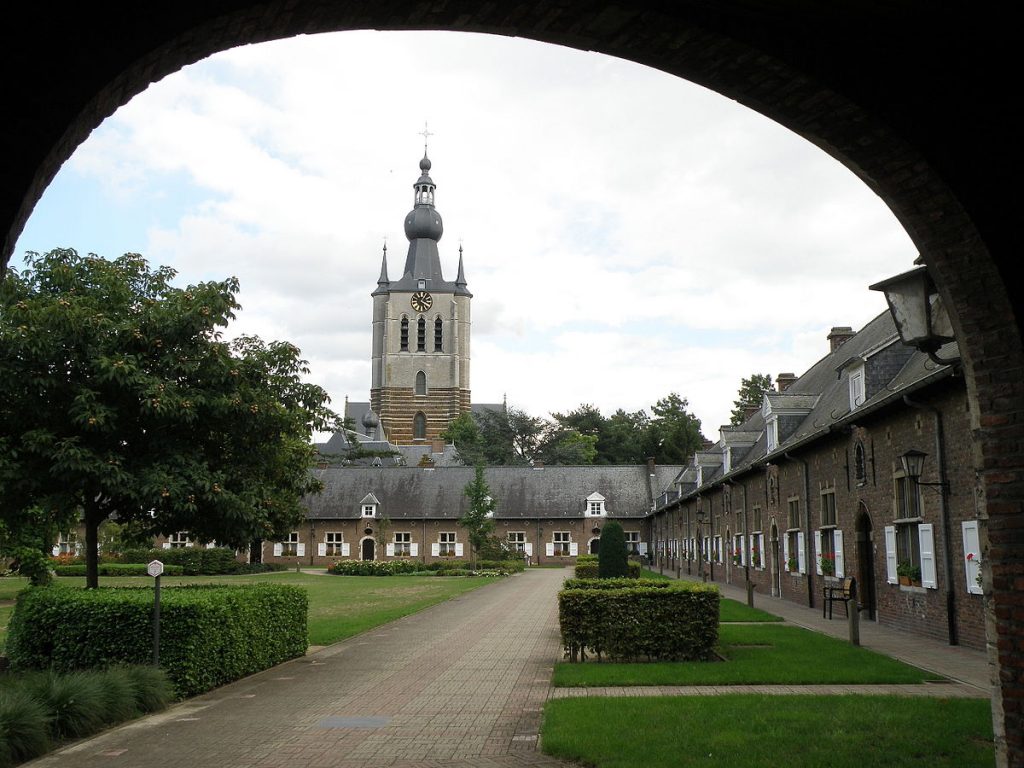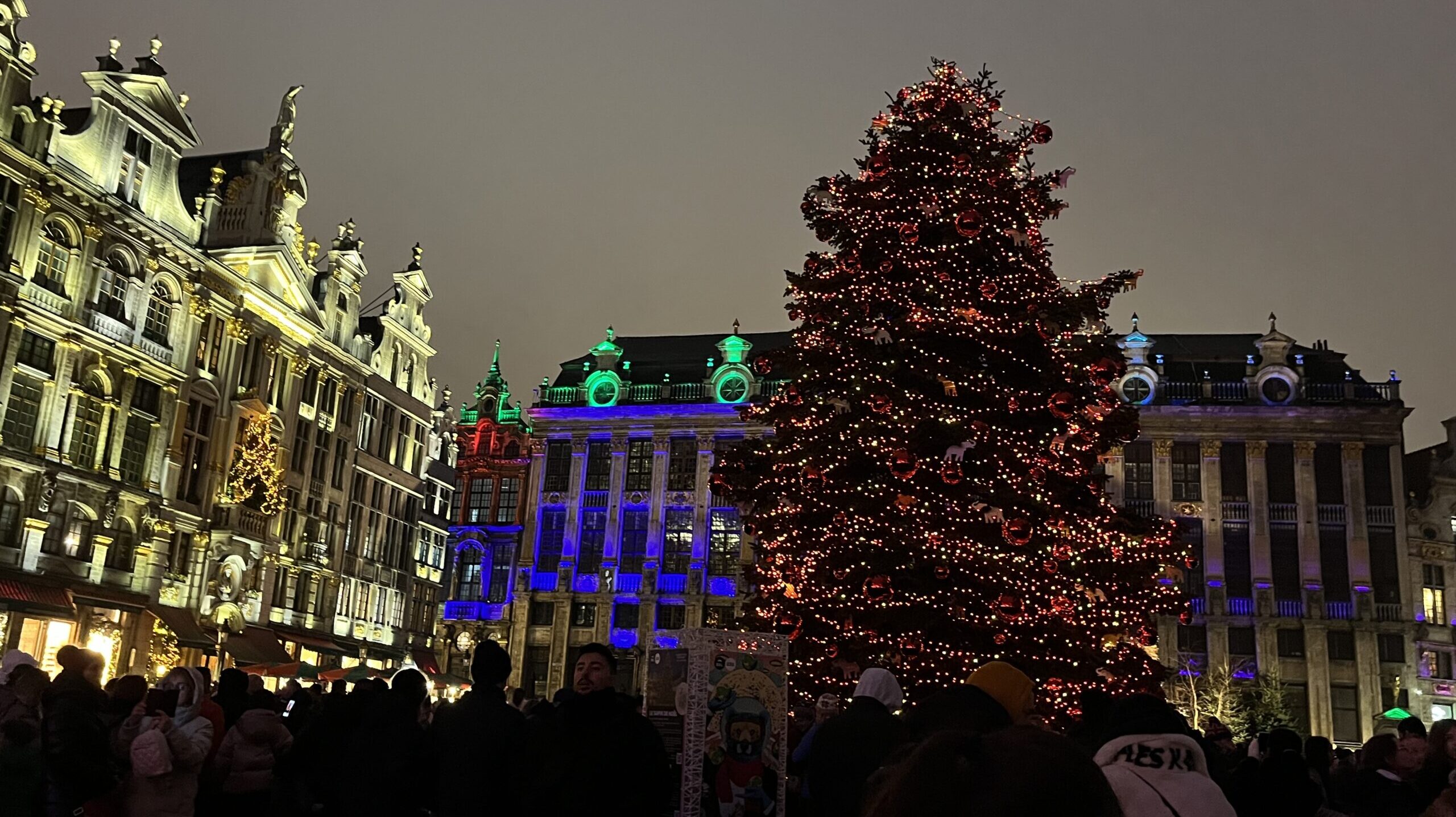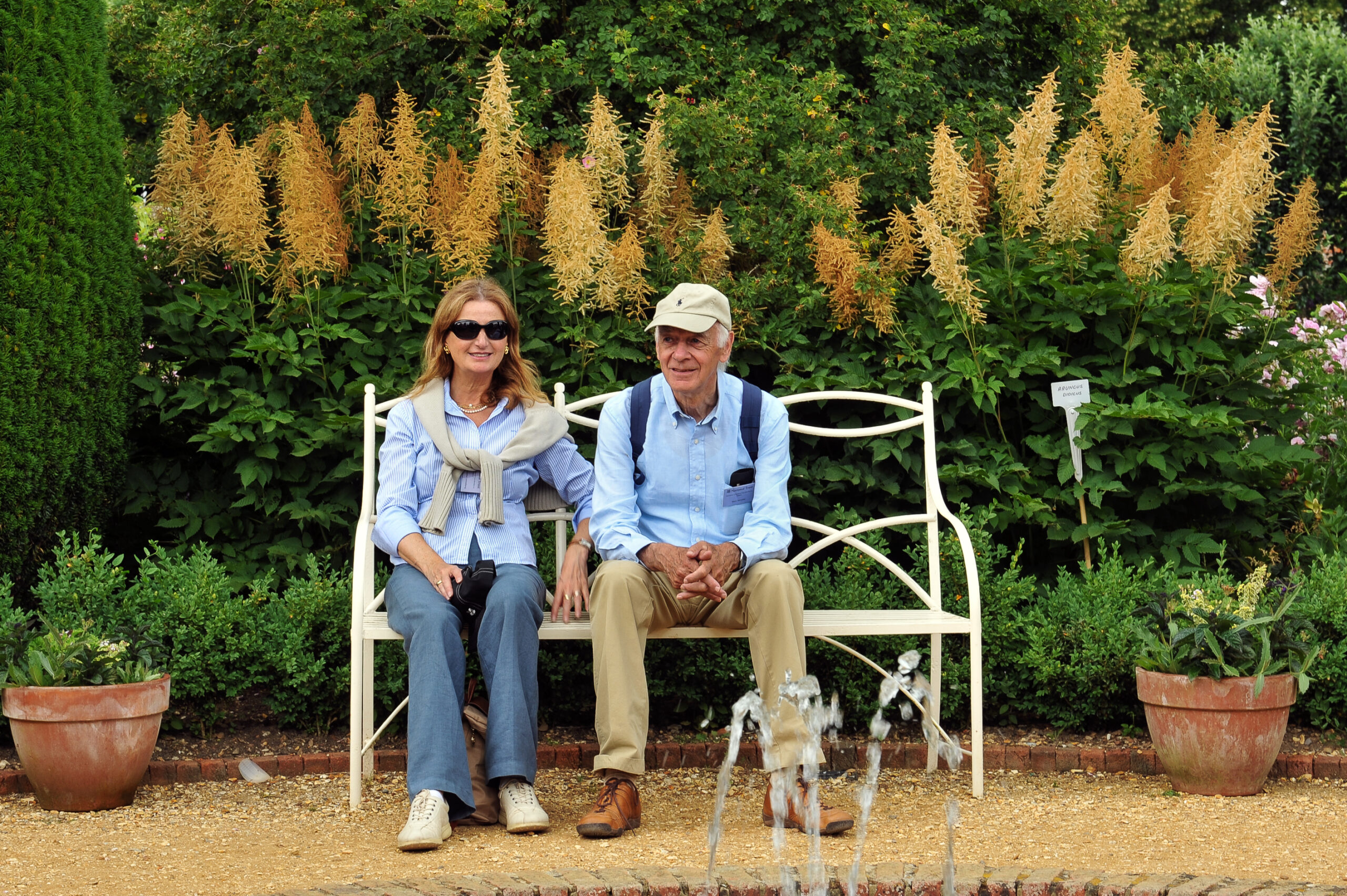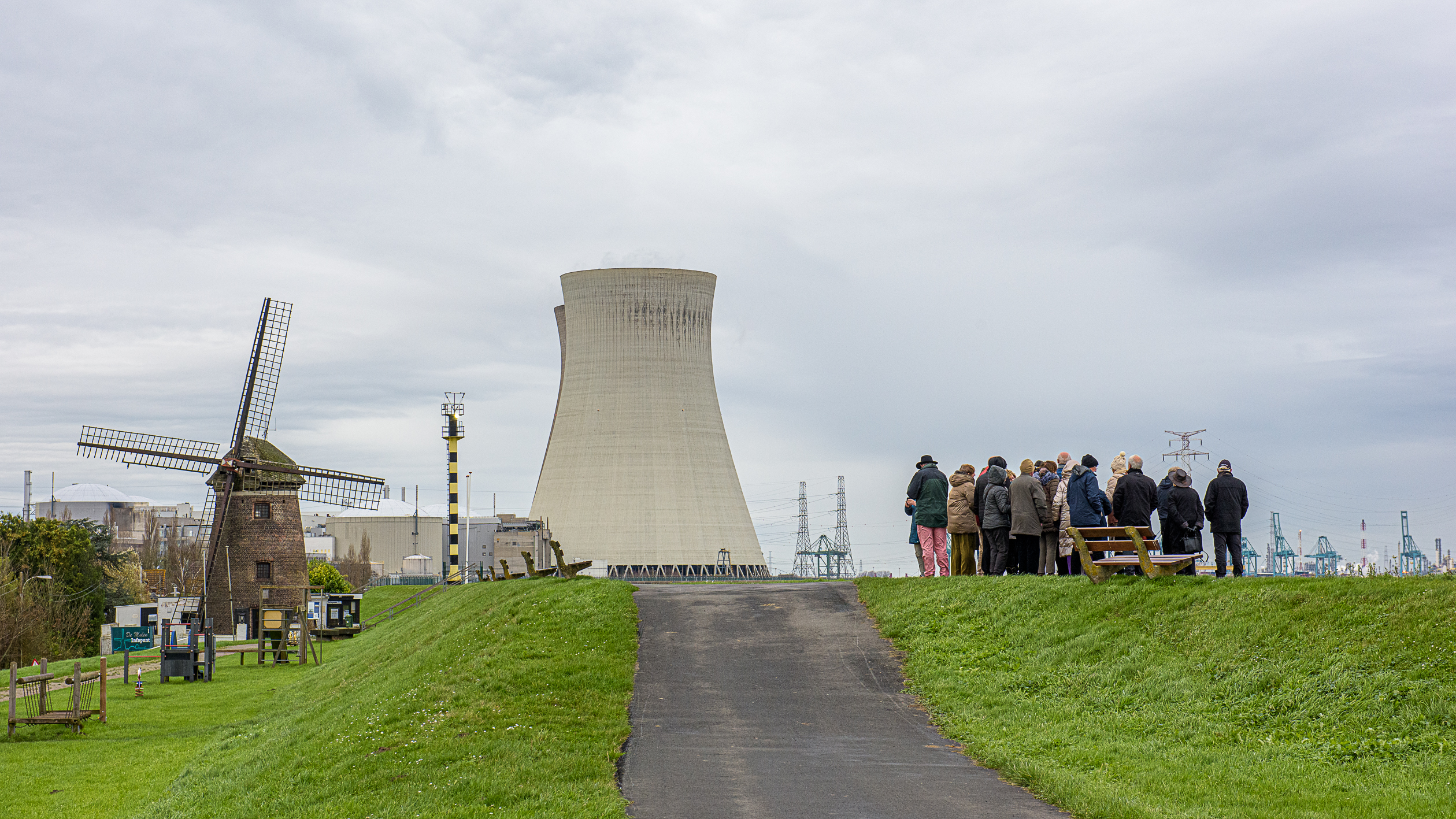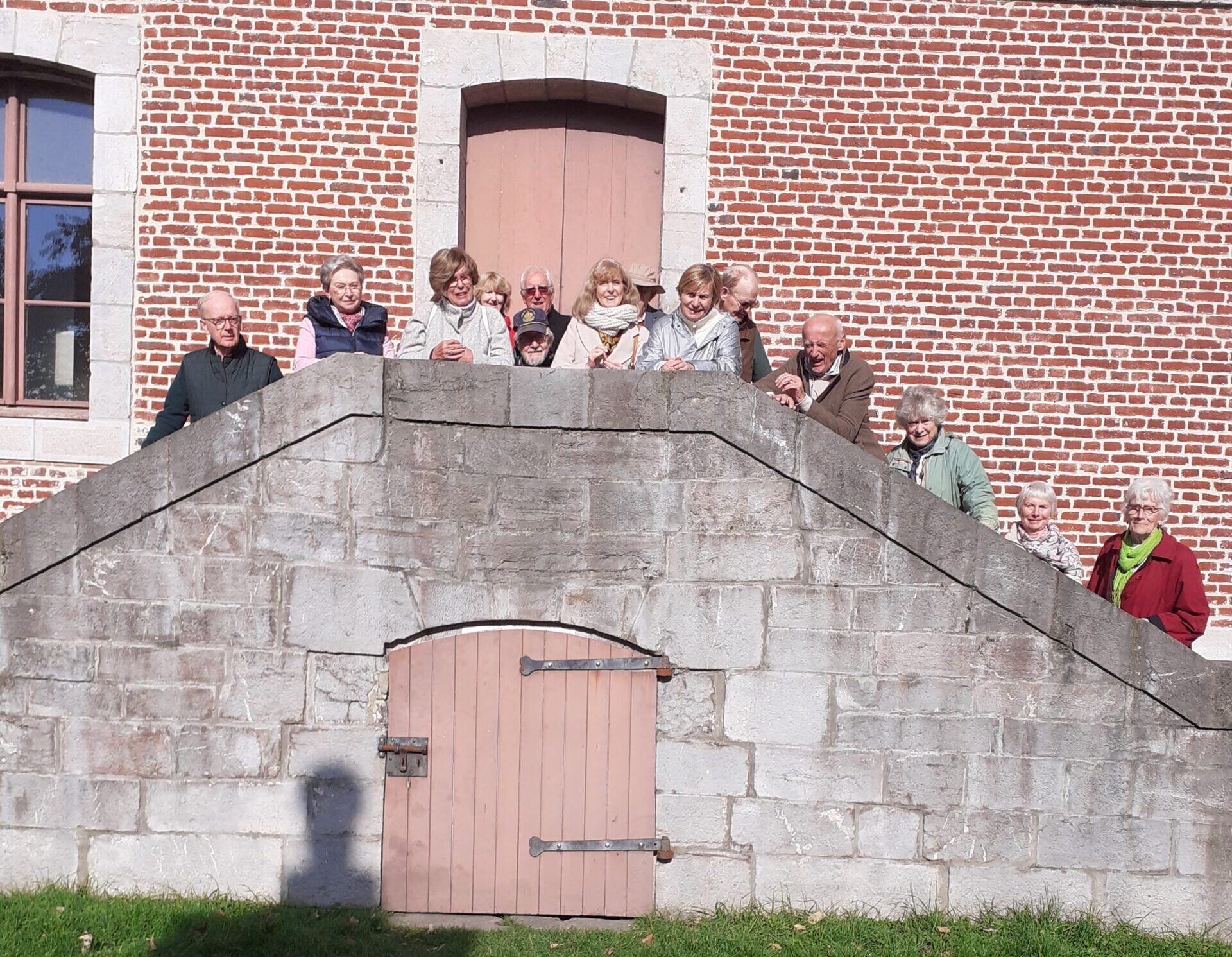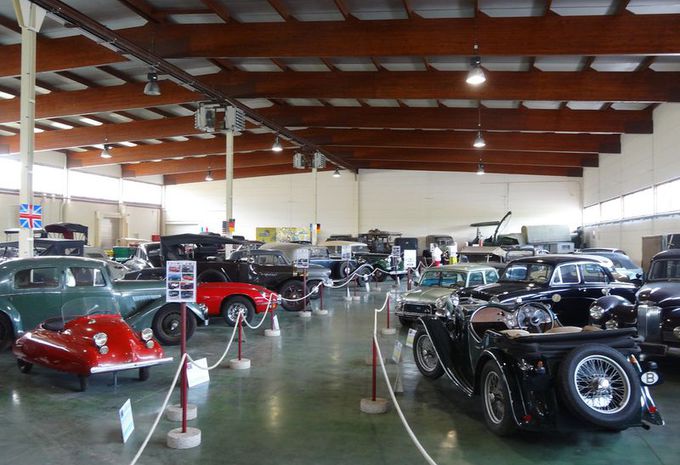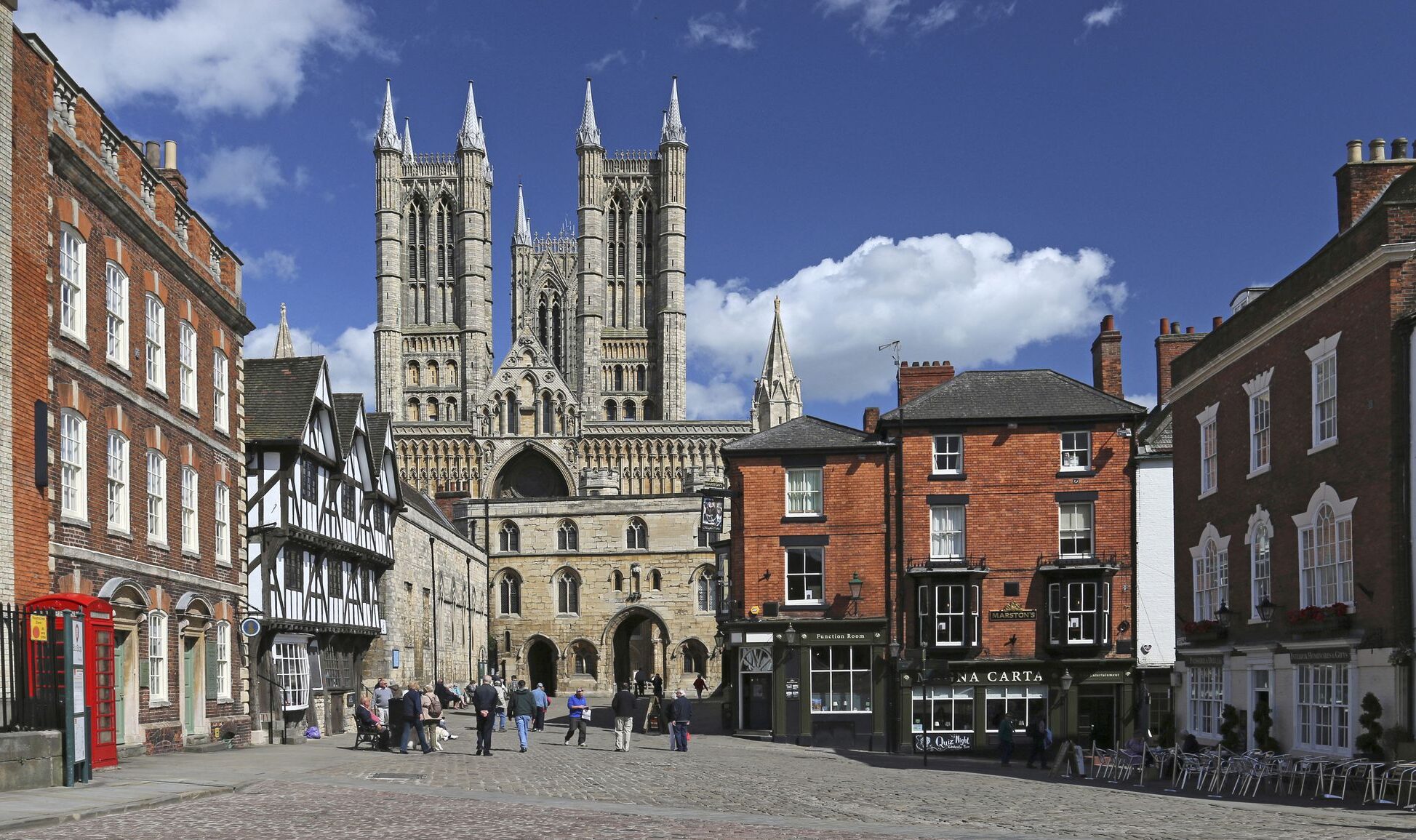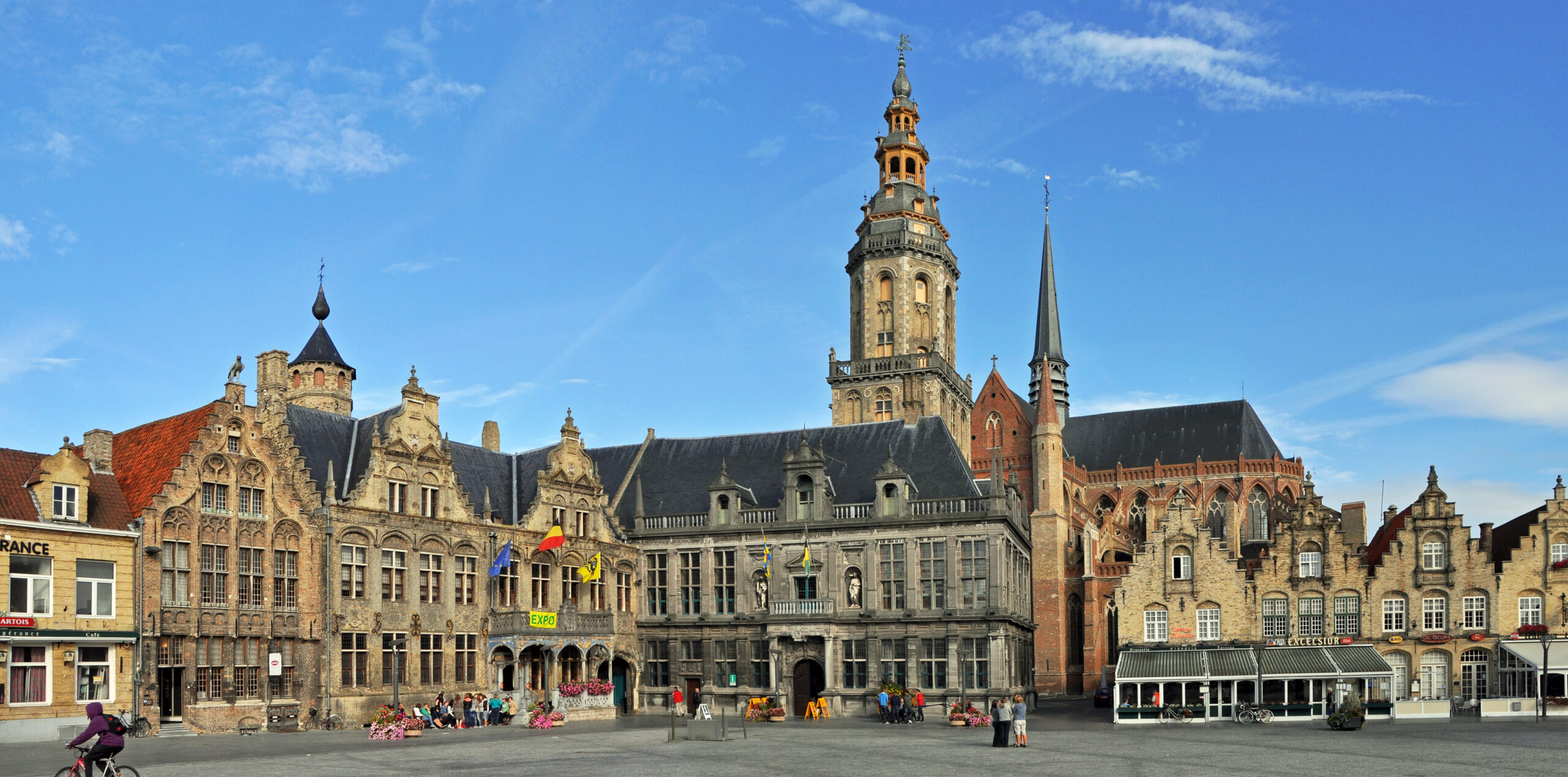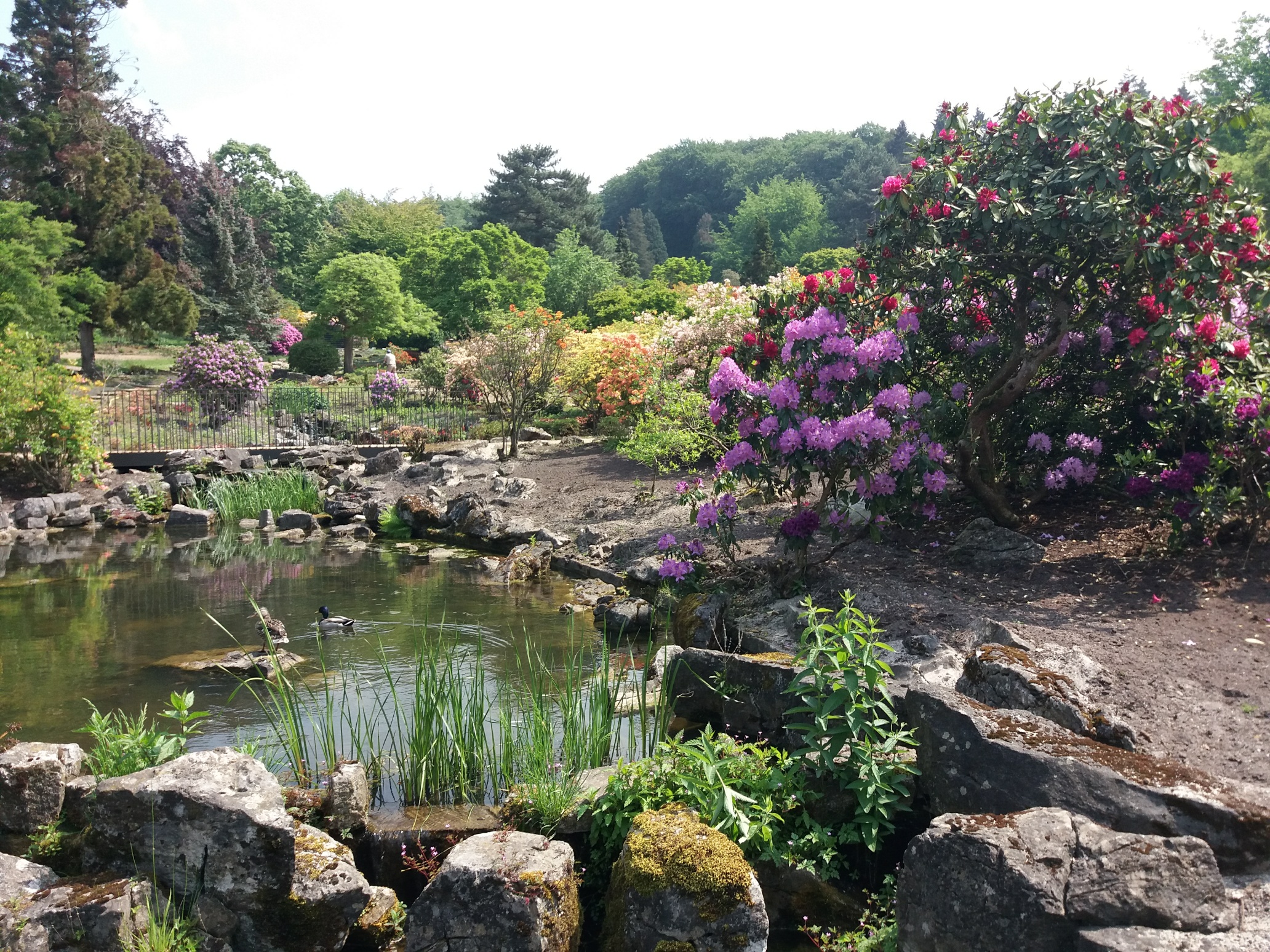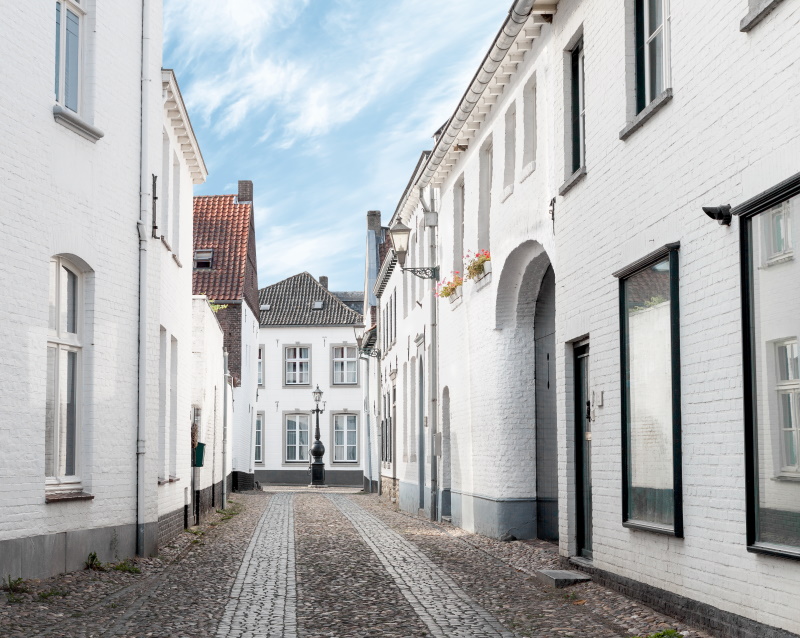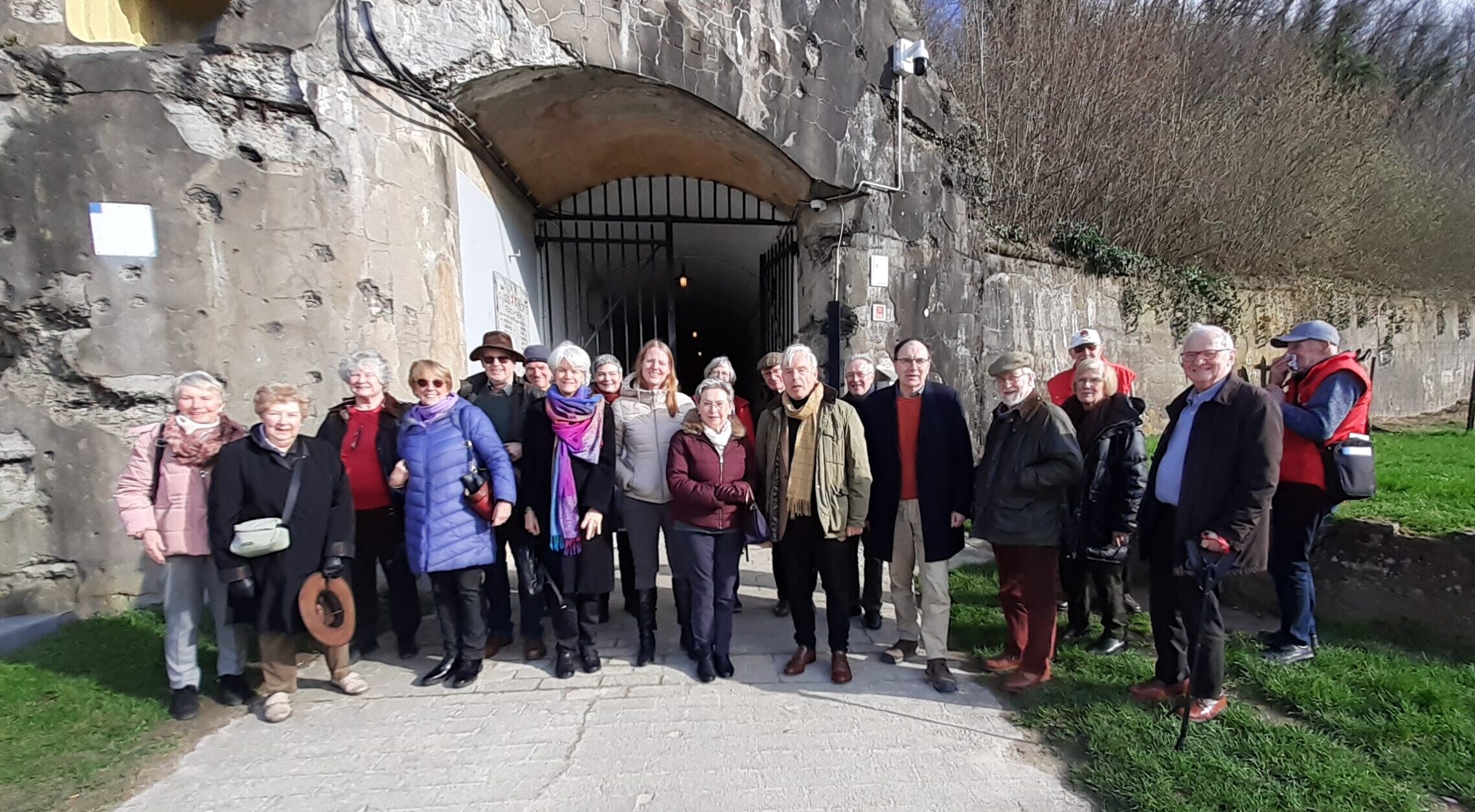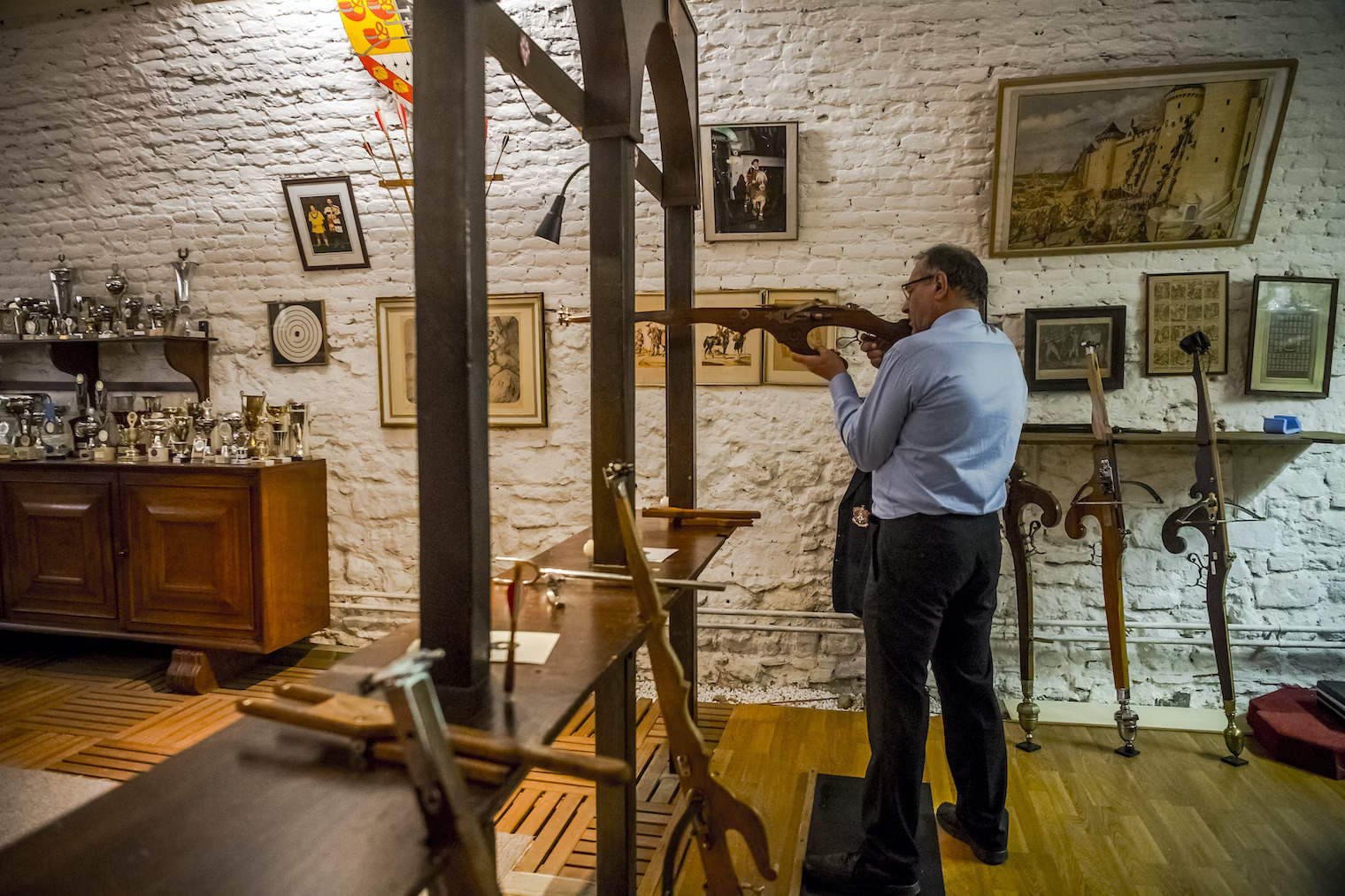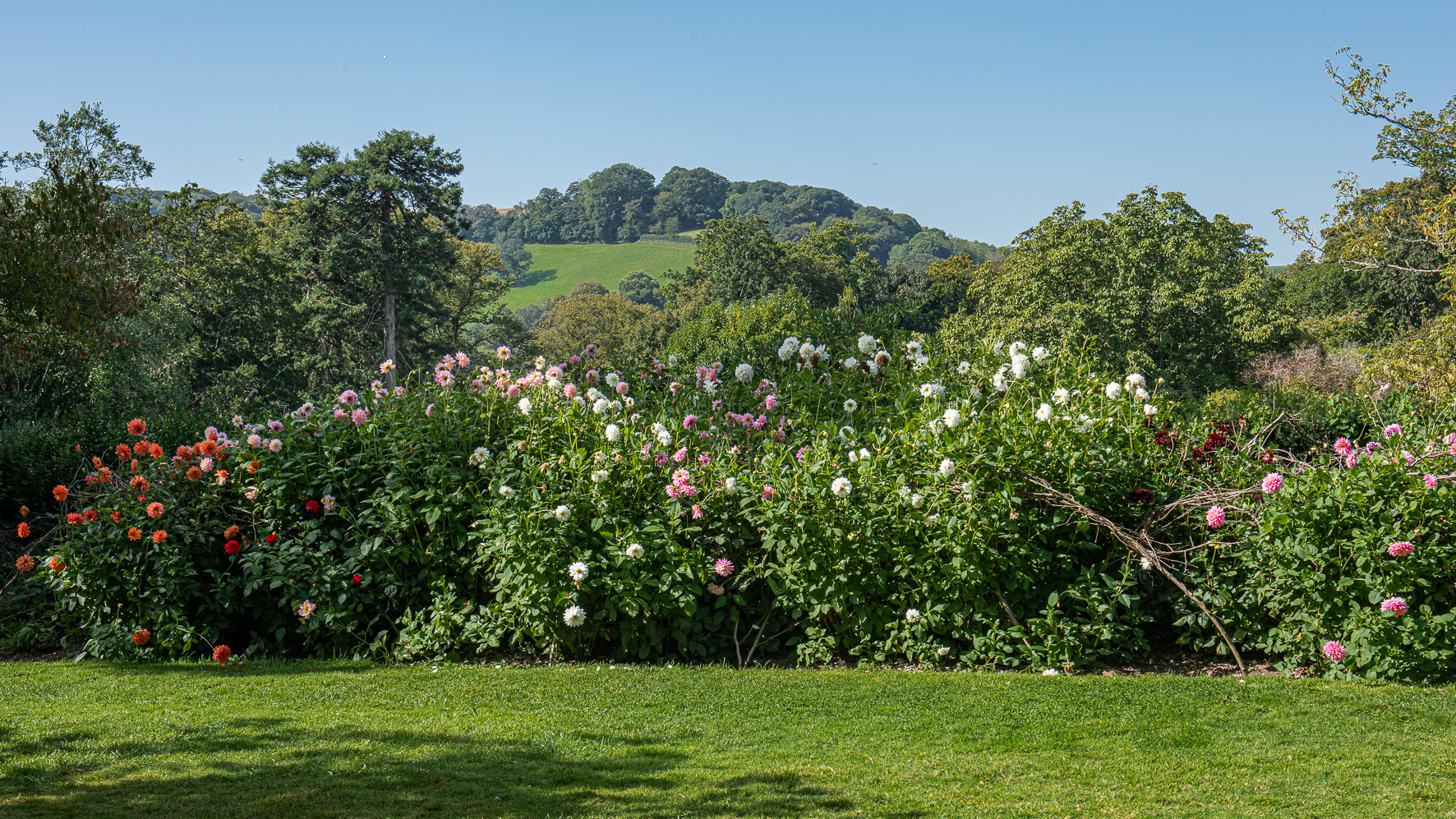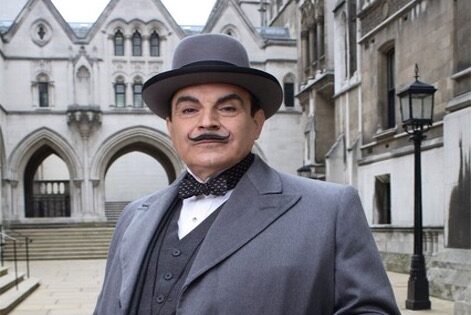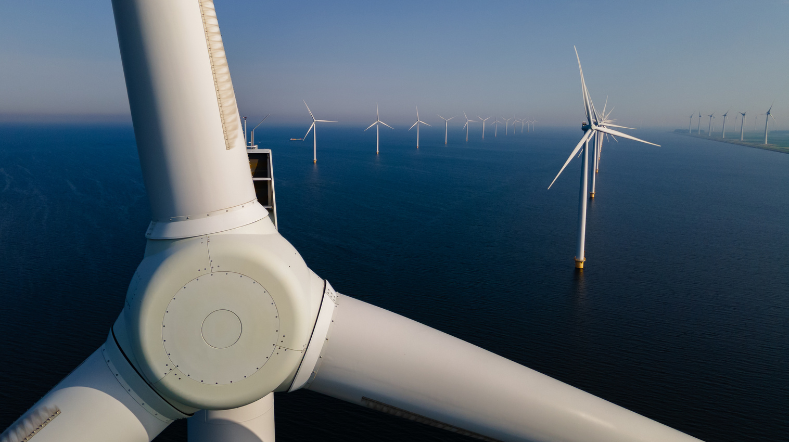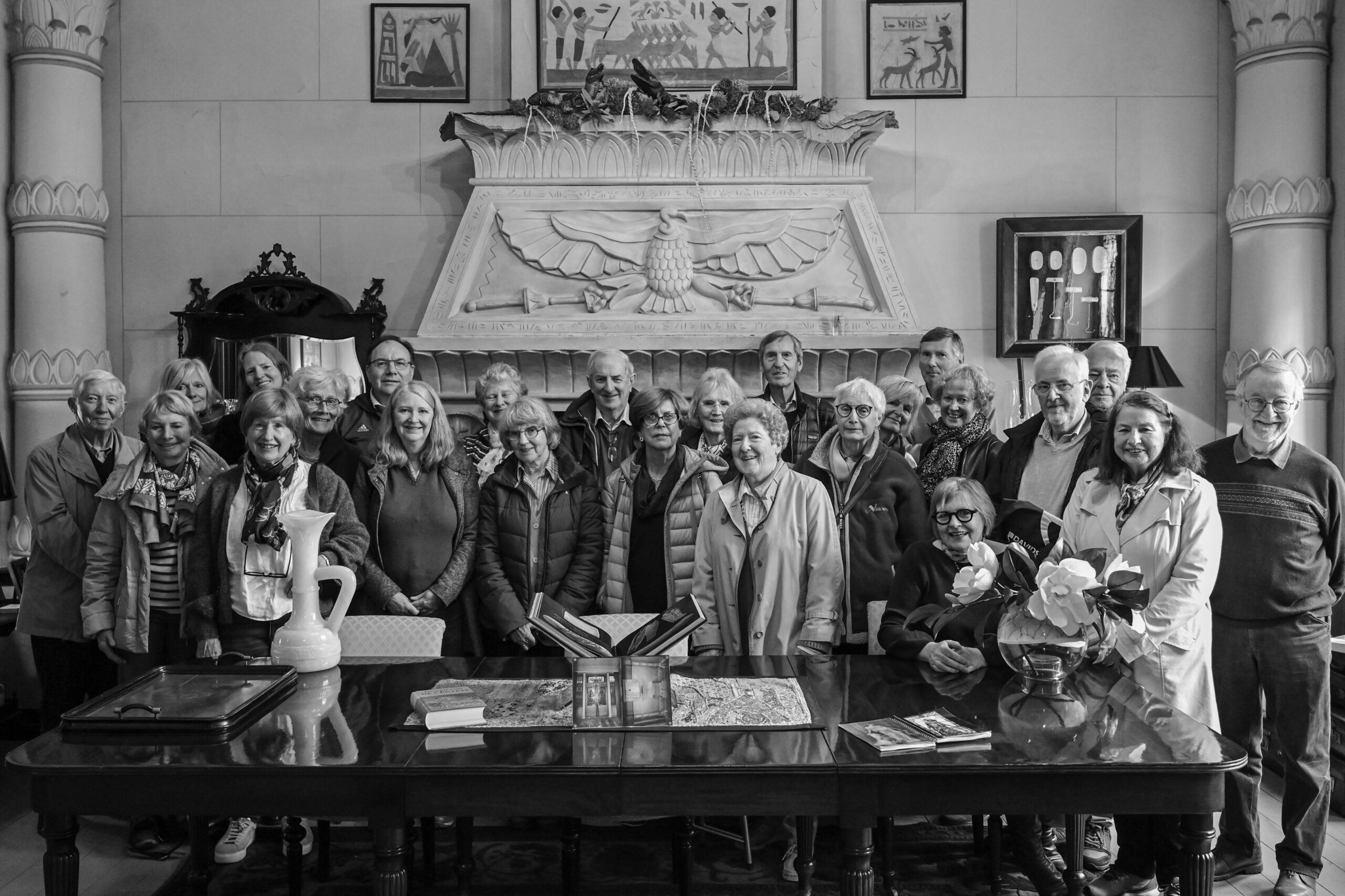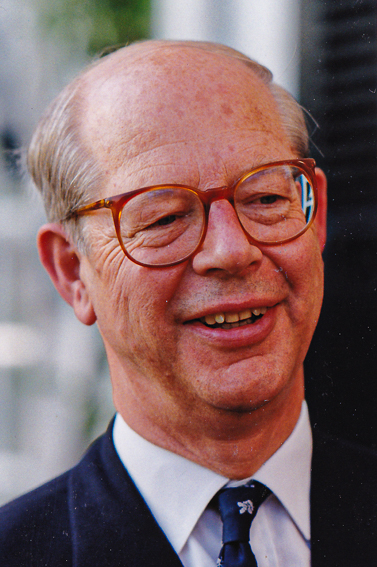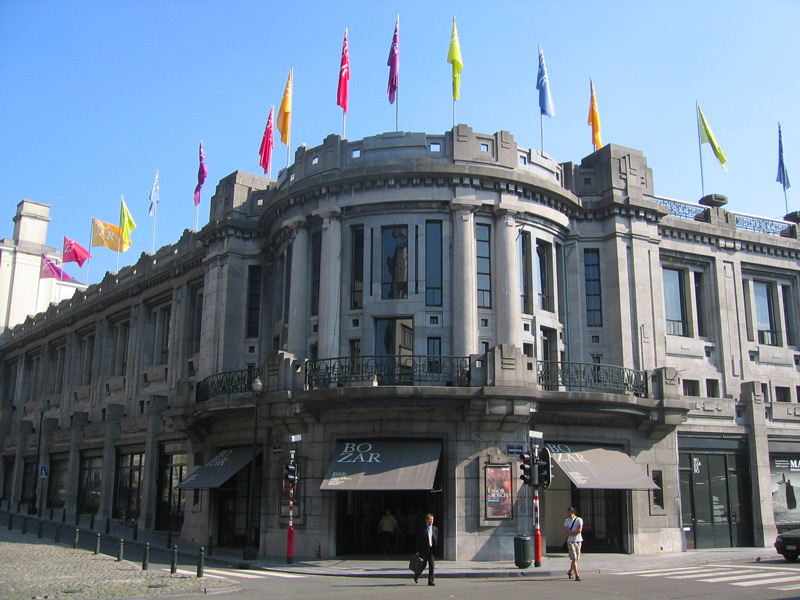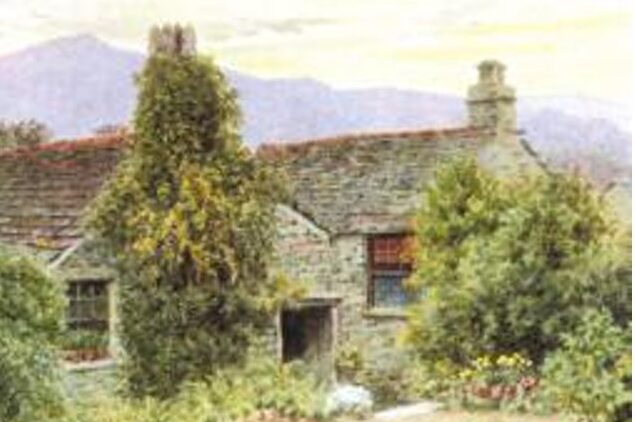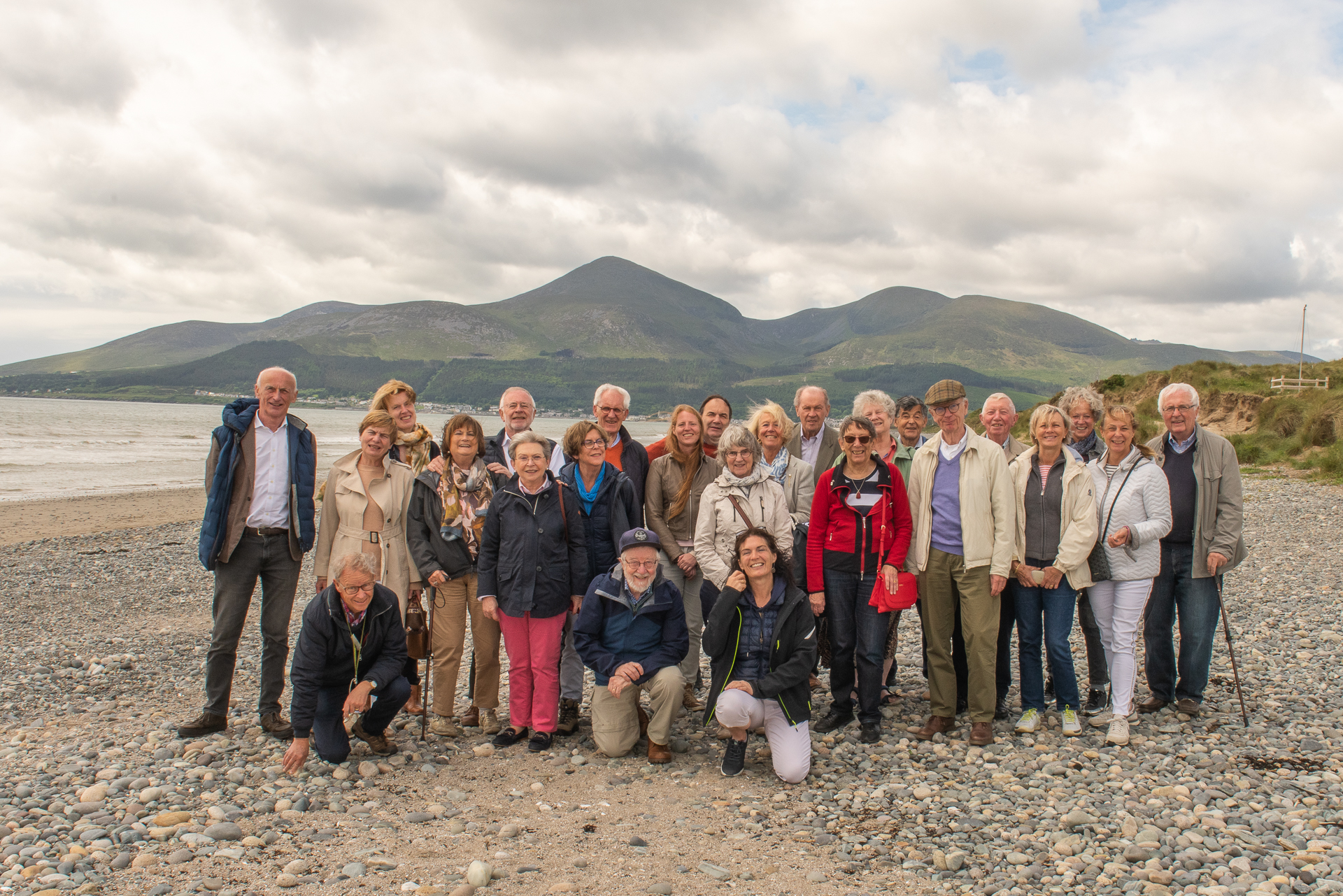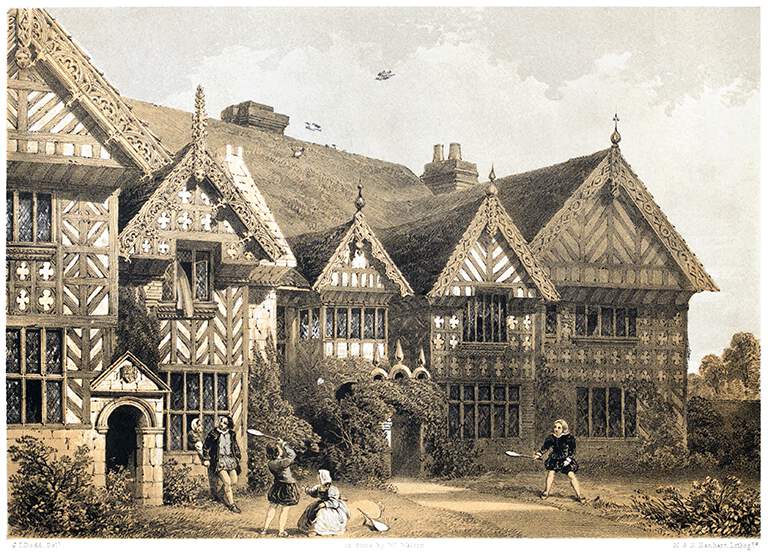Spa, of worldwide fame
Even the weather couldn’t deter those who joined the visit to Spa, deep in the Ardennes. Despite a cold and damp and dreary March day, we were warmly welcomed at the Tourist Office in the entrance to the Pouhon Pierre le Grand. Here, and during a walk through the city, we learnt about the town’s rise to fame in the 18th century, thanks to a visit by Tsar Peter the Great although already in Roman times the natural springs and their medicinal merits were well-known.
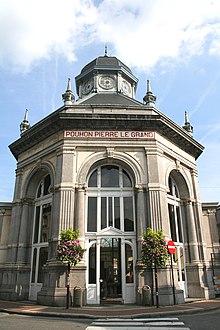
When Peter claimed to have been cured by its waters most of the crowned heads of Europe flocked to the pretty little town. Soon its name become the generic term for anywhere in Europe where natural springs were said to provide health benefits and in 2021, Spa was listed as a UNESCO World Heritage Site along with 10 other spa towns.
To amuse Spa’s royal guests the Casino was opened in 1763 (now the world’s oldest) and a racecourse ten years later. Austria’s Emperor, Joseph II, called Spa ‘the Café of Europe’. Casanova went one farther stating: ‘All the nations of Europe flock to Spa in the summer to commit thousands of indiscretions; I committed mine like everyone else’ … He also wrote: ‘People don’t just come to take the waters, but to do business, to plot, to have fun, to find love and to spy on others…’
After a typical lunch of the regional dish, Boulettes à la liègeoise (meat balls in a thick gravy), our group was taken up into the surrounding forested hills by tourist train to taste the various spring waters at a few of the other Pouhons (wells). These vary from sulphurous to a light or virtually no mineral flavour.
By the 19th century Spa had fallen from favour with the rich and the great as the middle classes moved in. However, Queen Marie-Henriette, wife of Belgium’s King Léopold II, remained a faithful visitor and had a villa built here. Today, the central wing of the Villa Royale, known as the Musée de la Ville d’Eaux, houses the most fascinating collection of items documenting the history of the city. At the end of our Pouhon tour those who wished could visit this excellent museum.
by Carole Ducastel
More stories about Spa
by Natacha Juvenet Delcour, April 2023.
(The author granted permission to post this text on our blog page)
SPA & THE BRITISH
Disclaimer
The author of the text below is no historian nor translator, but a citizen passionate about the story of Spa. This work is the result of a long research whose numerous sources are listed here after. The stories from different sources may differ slightly from one to another. If you happen to read or hear differently somewhere else, there is no one to blame.
Historians shared all sorts of theories and even an extra caution approach can not make it one hundred percent accurate, final or exhaustive. The following summary has been carefully drawn up to the best of knowledge. Kindly bear in mind the above while reading it. And most of all, enjoy it.
Introduction
Spa & the British, what a theme, what a team. Who inspired whom? Who influenced whom? Which one could be the most grateful to the other? Actually, the answer proves to be more complex than expected.
The city of Spa was undoubtedly precursor of modern thermalism and it’s only fair that the word itself resonates worldwide as a promise of wellness and relaxation nowadays. Waters æalneotherapy appeared. Bathing is the oldest therapy in the world. It was not only used for obvious hygienic and health properties but also to connect with each other, discuss politics, exchange ideas and trades or practice exercises. Mind and body were considered as equally important and celebrated.
1st Cent. There exist numerous theories about the etymology behind the word ”Spa”. Most historians tend to agree that we owe the name of ”Sparsa Fontana” (the gushing fountain in Latin) to Pliny the Elder. This Roman naturalist is very famous for being the author of what is considered as the very first Encyclopedia of Natural History. Unfortunately for him, his curiosity led him to the fateful site of Pompei where he died from asphyxiation caused by the toxic gases of the eruption of Mount Vesuvius, which he desperately wanted to study and observe with his bare eyes.
+60 AC Approximately at the same period, the Romans built baths and a temple in the valley of the River Avon in a thermal city they named Aquae Sulis. Sulis happened to be the Celtic divinity equalling to Minerva, the Roman Goddess for Wisdom and Knowledge. Aquae Sulis still exists nowadays and is actually best known as the city of Bath.
+500 AC In the fifth century, the barbarian invasions brought about the decline of the Roman Empire. Periods of disorder began… But the qualities of the waters of Spa an of the region were soon recognized by the new inhabitants. Springs were surrounded by a veritable cult which gave rise to variety of legends through Middle Age.
+ 700 AC Saint Remaclus evangelised the Ardennes and spread monasticism in the region. He died in Stavelot in 664. He still remains the protector and patron saint of the city of Spa. Worth knowing is that more or less in the same period, Bath Abbey was also founded in the 7th century and became a religious centre in the region. In Spa, the spring associated to Saint Remaclus is La Sauvenière, where he would have left the imprint of his shoe, with the miraculous power of curing infertility of the young brides. We can still witness today young couples who just got married indulging to this lovely fairytale – or longlasting superstition – to be assured of progeny.
16th Century Spa really began to thrive when the reputation of the waters led to significant trade. At this time, it was above all by ingesting large quantities of water that prevailed. The Church was not exactly thrilled about bathing habits, misjudged as decadent. Not to mention that pudibonderie ruled the society back at the time. It goes without saying that the idea of allowing people bathing for so-called healing purposes was not popular.
And this naturally led to the ”crenotherapy”, some hydrotherapy based on massive consumption of mineral water as beverages only. Unlike distribution (or tap) water, which undergoes multiple transformations and is chlorinated, source water is a groundwater that is drinkable at the source without any treatment. Mineral composition may vary from one to another as it comes from various sources. On the contrary, natural mineral water remains naturally unchanged and stable over time. Deep underground water with a pristine purity, it must be free of any risk and is therefore strictly protected. Finally, it can no undergo any chemical or microbiological treatment and must be bottled at the source.
But only the wealthy cureseekers could indulge themselves in a long journey in order to enjoy the benefits of the Pouhons. And sometimes they were not so willing to even though they could afford it. This is what gave the idea of transporting the water to the sick people’s homes. In the early days, the carriage of waters was often undertaken by quite old lady-porters called ”Botteresses”. If you have a closer look on some ancient illustrations, it is not rare that the author captioned this poor wretch making her way on for over such a long distance, heavily laden with bottles of mineral water.
1541 The Royal Doctor of King Henry VIII, Agostino the Venetian, already came to Spa in order to discover our springs, in particular our ferruginous waters. The Spa Waters are not identical – far from it – and their remarkable properties vary with the nature of the soils through which they have passed. On one side, the celebrated Pouhons (a contraction of old French ”puison” where the water is drawn together with the Latin ”potionem” for beverage) offer a wide range of diverse ferruginous and carbonic – and sometimes sulfureous – waters. More than 300 places where such waters wells up from underground are classified and the oldest or most important of these have been given special names: Peter the Great, Prince de Conde, Marie-Henriette, Geronstere, Sauvenière, Groesbeek, .. Apart from the Pouhons, there exist non-ferruginous and non-gaseous waters of great purity. The best known and most widely distributed is Spa Reine, which owed its name to the memory of H.M. Queen Marie-Henriette, who had a strong partiality for it.
1559 Dr Lymborgh, physician to the Prince-Bishop, studied the Spa springs and published a report about its fascinating properties. His work was translated in several languages, which inspired more and more aristocrats to visit our tiny village. That strange crowd coming in very fancy clothes in order to drink countless glasses of water were called ”Bobelins” (stupid), an ungrateful way to mock them at first. Nevertheless, it became rapidly a mark of respect since their venue was bringing so much to the city in terms of prosperity and development.
1571 Shortly after he got back from his stay in Spa, a British curist named Slingsby found a mineral source in Harrogate. Another one was soon found nearby by Dr Dwight, who decided to call it ”the English Spaw” (like the way ”Spa” sounded in ancient walloon). That marked the beginning of the Spa Towns story in England and around.
17&19th Cent. During the period known as the Georgian Era (between King George I and King George V), springs kept being discovered back throughout United Kingdom and thermal cities raised up and developed rapidly. Originally inspired by the Belgian – and already famous – thermal city, the word Spa spread around Great Britain to define more and more springs, including Boston Spa, Dorton Spa, Droitwich Spa, Matlock Spa, Royal Leamington Spa, Woodhall Spa… Fun facts : even in the thermal city of Bath, the train station is named Bath Spa and one of the school remains called the Royal Spa University. The common use of the ”spa” word came back to the continent three centuries later to define all sorts of wellbeing resorts and balneotherapy services. Including the French thermal city Vichy, whose campaign used to promote itself as the ”Best Spa of France”…
1600 Spa was the first to export its water as early as the 16th century to nearby regions and across the whole of Europe. Spa waters were exported to England via Rotterdam.
1610 British scholars Paddy & Andrews studied our ferruginous waters. Once back in England, they promoted the British springs with similar qualities, which kept contributing a great deal to the expansion of the word ”spa” in their country.
1626 King Charles I came to Spa and the first anglican chapel was built up upon his request given the importancenof the British community.
1655 His son King Charles II came to Spa in exile and for political reasons. Around that time, the medical properties were officially recognised by Brown & Schoverus, the Royal Doctors of the British court. A formal authentification is delivered by England as an efficient cure to some unfortunate conditions such as vertigo or hypochondria.
1717 Russian Czar Peter the Great came to Spa following advice from his personal doctor in order to relieve his liver from persisting troubles. He spent four weeks in the thermal city, drinking enormous quantity of Spa waters, mainly from Pouhon (which will be named in his honour afterwards) and La Geronstère springs. Muchtaller than the average man and eating like an ogre, he has been suffering from gallstones for many years. His recovery will be acknowledged by his doctor who delivered a recognition certificate thanking the city. This will mark the beginning of the first Golden Age of Spa, which will know its first glorious period in the 2nd half of eighteenth century.
1734 Spa counted numerous springs people were used to pass by and drink directly from. Back at the time, ”take waters” meant to drink mineral water from spring, which is called ”Crenotherapy”. Rapidly enough though, balneotherapy will turn into a new practice for curists. The Hôtel de Waldecq was the very first place to offer private baths facility. It has now disappeared but was more or less located where the Cascade Monumentale currently stands.
1751 Spa has numerous walks to offer to its curists, partly thanks to some English Lord known as Sol Cress Berkeley who lived in Spa for 20 years. He was one of the most inspired architects who designed these lovely crossing paths in the forests of Spa. These amazing walks still exist and allow hikers to join one Pouhon to the other passing by through nature only.
1762 One of the main aspects of the thermal cure is the entertainment. On top of water drinking, long walks and diets, peopled needed to relax and forget about their health issues. The first European Casino opened up in Spa in 1762. But in order to prevent Spa from the bad reputation of gambling and drinking places known as such in Venice, the place was called La Redoute, named after Il Ridotto (aka the hidden place), the fancy place where Italians were used to gather. Later on, La Redoute will be renamed into Kursaal than Casino, exactly where it still stands today.
1766 British people continued to be found of Spa and its springs. There were so numerous that they created their own British Private Club, which started at 34 and largely exceeded 500 members after two decades only. The same year, the ”Liste des Seigneurs & Dames”, in which visitors – whether they belonged to the nobility, the clergy or to the affluent bourgeoisie – are meticulously recorded, listed no less than 25 British donators who contributed to the beauty of the city.
1770 The second entertainment place, known as the Vaux-Hall, opened up. That obviously British name came from public gardens in London, particularly appreciated for the assembly of people, aka ”Folks Hall”.
1773 The Duke of Lauzun came to Spa in order to meet his British mistress. They had originally met in London, where he had discovered horse racing. During his stay in Spa, he organised the very first gentleman race of the continent. The race location will be known as the ”Hippodrome de la Platte”, named after the silver coin (la platte) which was at stake. That racecourse was more or less where the Spa Golf Club of Balmoral is now located. Due to its growing success, two other racecourses would follow. The ”Hippodrome de la Sauvenière” was a speed racecourse created in 1822. the current airfield built up on its site still shows the shape of the ancient racecourse. The last racecourse was just next door to the Waux-Hall (currently a football club) but only lasted for a season. The much appreciated jumping obstacle ”Barres de Spa” is one of the rare legacy which remain from the ancient success of equestrian discipline in Spa.
1773 Another spring offered bathing facilities: les Bains du Tonnelet. However, it was a bit off-centre which inevitably lead to its disappearance.
1781 The legend says that Spa having become a popular meeting place for the nobility and European Bourgeoisie, the emperor Joseph II dubbed the city as the ”Café de l’Europe”. Some historians refute that controversial story and yet, the name still remains as a testimony to the international reputation of the city. Today Spa is famous to the Pearl of the Blue Ardenne, a treasure in a no-less precious nature, a jewel in a water box.
1809 William Cockerill bought several properties in Spa, including the Grand Hotel (currently the City Hall) where his son John Cockerill created a factory, which contributed a great deal to the welfare and prosperity of Spa.
1818 The famous ”Iron Duke” came to Spa. The unwavering tenacity of the Duke of Wellington was the sourceof his well deserved nickname. He was the great victorious of Waterloo in 1815 and the iron-made-lion statue erected on top of the ”Butte” came from the Cockerill factory. A century later, the name Wellington will be chosen to name a brand newly found spring, with the secret hope to bring back British visitors.
1828 Right in the middle of the city (close to the current City Hall), the Hotel des Bains was built up, which was the very first place to offer public bathing amenities.
1841 A second one will soon follow at the entry of the Parc de Sept Heures aka the 7 O’Clock Park. Both places were naturally water-supplied by the Marie-Henriette spring. However, the flow was very low and not very satisfying in terms of quality. Nevertheless, the second Golden Age is about to rise up in the second half of the nineteenth century. Coming back to the 7 O’Clock park, did you know that another green square nearby is called the 4 O’Clock Park? This weird denomination actually remind us the times of the day at which cure seekers used to gather within. Funny, isn’t it?
1849 Spa is famous for its waters but also for the peat, a sort of unique foam which is naturally growing in the Hautes Fagnes. That foam accumulates during tens or even hundreds of years in bogs and take time to integrate all the trace elements present in the nature. It is also the top filter which makes Spa springs so pure and special. The peat bath (peat mixed up with the Marie-Henriette carbonated water and heated to 40°) is an exclusive product. It has been part of the thermal tradition in Spa thanks to the British Doctor Cutler, who started to advise peat baths for its beneficial effects against rheumatism and osteoarthritis. This chocolate cream-like bath never stopped to be a sovereign treatment to reduce muscle tension and stiffness and remains a much enjoyed typical Spa relaxation.
1868 The architect Leon Suys designed and built up what was considered as the most modern, luxurious and brilliant thermal centre of whole Europe: Les Bains. That construction was the apex of comfort, service and technical innovation. Besides, it remained up and running for 136 years! That beautiful neo-classical construction included no less than 54 private cubicles, a swimming pool and a sports room amongst others. It was also fully equipped with the famous copper bathtubs used for peat treatments, which are still in use in the new thermal complex.
1876 The Anglican Church was built up in Spa and inaugurated in 1877. Sadly enough, this neo-gothic construction is now lost. The legend says that it was demolished… the very day it was officially classified and protected, the decree being delivered a few hours too late. Some remains (doors) can still be seen at the Horse Museum. Strangely enough, the Catholic Church itself was not consecrated until a few years later, in 1886.
1883 A first golf club appeared in La Sauvenière in 1883. Another one opened up in 1930 and still exists. Many consider it as one of the finest golf clubs of Europe due to its beautiful location and amenities.
1888 The world’s very first beauty pageant, the Concours de Beauté, was held in Spa on 19 September.
1891 Like horse racing and golf playing, tennis is another gentlemen sport highly appreciated in Spa. A group of frequent British visitors founded the Lawn Tennis and Archery Club de Spa in 1891, which happened to be the second tennis court of Belgium. The Tennis Club of Spa still exists and now includes an annex to play indoor in case of bad weather conditions.
1893 Our beloved Queen Marie-Henriette bought a property in Spa and had it renovated in order to have her own accommodation in Spa. Suffering from bad health conditions, neglected by her husband King Léopold II, sentenced to a unfaithful marriage and greatly in pain due to the loss of her young son at the age of 9, the queen came to Spa more and more often, gradually discharged herself from the court obligations in favour of Princess Clementine and ended up in buying her own place at Hotel du Midi, currently known as the Villa Royale (exactly where the Spa Museums and exhibitions stand now). in 1895, she definitely moved in and lived in Spa for her seven last years, definitely associating her name and destiny with the city she absolutely adored.
The forests around reminded her the Hungarian landscape she used to galop onto. She was absolute found of horses, including jumping and racing, and it’s common knowledge that just a few hours before she passed away, she was still enquiring about racecourse results of the day. Needless to say that her contribution to the fame of Spa justifies entirely that the spring essential to the life of the Thermes is named after her: the Marie-Henriette spring.
1894 Pliny the Elder, Saint Remaclus, Dr Lymborgh, John Cockeril, Duke of Wellington, Duke of Lauzun, Peter the Great, King Charles II, King Léopold I & II or Queen Marie-Henriette are just a few illustrious visitors who highly participated in the worldwide fame of the city of Spa. In honour of all these famous figures, Antoine Fontaine painted a marvellous Golden Book, currently displayed at the Office du Tourisme office. With the dedicated support of the historian Albin Body, it took him 12 years to represent 95 out of the hundreds visitors who took part one way or the other in the history of thermalism in Spa. This extraordinary 9-meter-long masterpiece reunited the most well-known Bobelins who came to Spa over the preceding three centuries, and this in a joyful anachronism. While paying extra attention, we can also distinguish that the work reflects two allegorical statues celebrating the arts of painting and music, but also some favourite places cherished and valued by the curists discretely added in the background : the Pouhons Peter the Great, La Geronstère, La Sauvenière, Groesbeek; the Galerie Léopold located at the entry of the 7 o’Clock Park; and finally the 1868 original thermal infrastructure Les Bains. No wonder that this exquisite work is usually the departure point of our guiding tours.
1905 Next to the Anglican Church, located on the logically named Boulevard des Anglais, stands the Britannique. Currently a boys boarding school since 1958, it used to be a fancy hotel obviously preferred by the British visitors. Original construction was dated in the second half of seventeenth century and completely demolished in 1903 to be replaced by a brand new one inaugurated in 1905. It hosted two major events in the history: the Belgo-Dutch reconciliation in 1883 and the resignation of the Kaiser in 1918. That elegant construction has been classified in 1983.
1909 The company Spa Extension signed up a development plan of the upper north side of Spa. The ambitious project included luxurious hotels and villas, a golf club and a racecourse. Much appreciated by the British aristocracy, the area is naturally called Balmoral, after the famous Royal Balmoral Castle located in Scotland, known as the all-time favourite place of her late Majesty the Queen Elisabeth II. In parallel, some promotors initiated the construction of the tramway line in order to commute easily with the city centre.
1912 On April 15th, RMS Titanic, a British passenger liner operated by the White Star Line, sank in the North Atlantic Ocean. Out of the 2224 passengers and crew aboard, more than 1500 died, including the Belgian violinist Georges Alexandre Krins. Born in Paris in 1889, his family moved back to Spa soon after his birth. He studied music in Spa and Liege then went to Paris to be first violin and finally ended up in London for a 2-year-long career at the Ritz, where he got recruited to play on the famous ship for a fatal journey. After the Titanic hit an iceberg, the eight fellow band members started playing music to help keep the passengers calm as the crew loaded the lifeboats. Many of the survivors said that the band continued to play until the very end. He was the only Belgian onboard. A discrete panel pays tribute to his courage at the entry of the Cardinal Hotel, the family property.
1920 The Spa Conference took place at Chateau de la Fraineuse in Spa. That conference followed directly the Treaty of Versailles and was the first post-war peace conference to include German representatives. The main topics were German disarmament, coal shipments to the Allies and war reparations.
1921 One of the most important events of the period between the two world wars was certainly the creation of the company Spa Monopole by the Chevalier de Thier in April 1921. The trade in water that had flourished unit the 18th century, after a lengthy dry spell until the 19th century, would then take on a highly industrial dimension. The production has evolved through the years, offering a wide range of gaseous, non-gaseous, ferruginous, flavoured and even radio-active sorts of drinks. Today, the star sales include the unassailable Spa Reine, which is the purest and the lightest in minerals; the Spa Finesse – formerly Marie-Henriette – is a naturally sparkling and iron bearing water, which is used as it in the bathing treatments but iron is of course removed before bottling for future consumers; and finally Spa Intense – formerly Barisart – whose lightly acid character and slight mineralisation are harmoniously combined and intensely extra-gasified. Apart from these three major sellings, Spa Monopole chose to extend the offer by adding natural fruity flavours to offer consumers all sorts of low calories beverages and lemonades.
1921 Designed in 1920 by Jules de Thier and Henri Langlois Van Ophem, the Circuit de Spa-Francorchamps officially opened in 1921 but inaugural race was cancelled when only one driver entered. The first car race was actually held in 1922 and the circuit was first used for Grand Prix racing in 1925. Despite its name, the circuit is not in Spa but lies in the vicinity of the town of Francorchamps. Known as the long-time home of the Belgian Grand Prix, due to its location within the beautiful Ardennes forests and given the specific weather conditions and its famous challenging corners, the circuits is one of the most appreciated and plebiscited in the world.
1944 In Berinzenne, we can find a RAF monument in memory of the British and Canadian pilots whose plane was shot by German artillery and which crashed in the Hautes Fagnes a few kilometres away from Spa.
1949 Already threatened to disappear with WWI, thermalism as we knew it in all its glory tended to decline again with WWII. Luckily, the local doctor Jean Barzin had the genius idea to initiate a program called social thermalism after the war, which was a successful system put in place to send patients from the recovery home les Heures Claires to the Bains. That trade saved the thermalism for a few extra decades.
1975 The movie Barry Lyndon from British director Stanley Kubrick and based on the British novelist William Thackeray is partly set in Spa during the eighteenth century. However, no scenes were actually filmed in Spa itself but rather shot at Dunrobin Castle (exterior and garden as Spa) … in Scotland. Still referringto literature, did you know that detective Hercule Poirot, the popular character created by Agatha Christie, was native of Spa?
2002 The common noun spa is officially added to the dictionary, which we are very proud of. This is a vivid testimony of the unquestioned legacy the City of Spa has brought to the wellness habits throughout the world.
2004 Unfortunately, the end of the reimbursement by the social fund in 1989 signed up the definitive recession of thermalism as we commonly knew it. Fortunately, Spa never stopped to re-invent itself and took the opportunity to start a new concept based on thermoludism aka playful thermalism. The idea is to allow tourists to relax for half a day or to enjoy wellness standards just as well, especially if staying over for the night or more.
The new Thermes de Spa building was inaugurated in 2004 and the premises are split in two: one area is meant for leisure bathing and the other zone is dedicated to high quality treatments. No less than 3 different springs are used in the thermal infrastructure. Rich in bicarbonate and calcium, the Clementine spring supplies the central areas before spreading to the thermoludic zone, including jacuzzis, bubble seats, massage jets… Naturally iron bearing and carbonated, the famous Marie-Henriette is used for carbonated and peat baths. Last but not least, the Reine spring is very low in mineral salts and is used as a drink to eliminate toxins. The combination of each spring benefits as well as the copper bathtubs tradition inherited from the old thermal complex make each journey a quite unique experience only available in Spa.
2020 The unofficial all-time lap record set during a race weekend is 1’41’’25, set by British pilot Lewis Hamilton in a Mercedes, during final qualifying for the 2020 Belgian Grand Prix.
”Like Monaco, Silverstone and Monza, Spa is one of the historical circuits I loved to see on TV when I was younger. It’s not only an amazing location but also a circuit you have to push F1 cars to their upper limits. I think Spa Francorchamps should never be dropped from the F1 calendar.” Lewis Hamilton.
2021 Spa became part of the transnational UNESCO World Heritage Site under the name ”Great SpaTowns of Europe” comprising 11 famous historic spa towns and cities in seven countries including Austria, Belgium, Czech Republic, France, Germany, Italy and the United Kingdom. As a World Heritage Site, it has been given global recognition as a phenomenon which helped to shape Europe, representing a unique cultural phenomenon as well as a particular urban type and form. It is also worth knowing that the City of Bath was already inscribed since 1987 as a UNESCO World Heritage site.
Natacha Juvenet Delcour
From Spa with Love
Finished in Spa, on 14 April 2023
Private Property – Do Not Further Share Or Replicate – Thank You
BIBLIOGRAPHY
Books
L. M. CRISMER, The extraordinary History of the Waters of Spa , Spa Monopole, 1989.
L. PEETERS & D. HOUBRECHTS, Spa Ville Thermale – Source of the spas , Prisme Editions, 2016.
L. DE MOERLOOSE, Spa Vile-écrin des Jolités – Treasure trove of Jolités, Prisme Editions, 2018.
M.-C. SCHILS, Le Livre d’Or de Spa, le Tableau d’Antoine Fontaine , Editions du Musée de la Ville d’Eaux,
2006.
VARIOUS AUTHORS, Histoire et archéologies spadoises (bulletins quadrimestriels) , Editions de la Villa
Royale Marie-Henriette de Spa.
Websites
Cirkwi.com
GreatSpaTownofEurope.eu
Lechateaudebalmoral.be
Lesthermesdespa.com
Spa-Francorchamps.be
Spa.be
Spadel.com
SpaRealités.be
SpaVillaRoyale.be
Villedespa.be
Wikipedia
Past Events